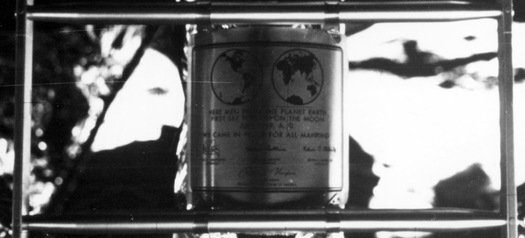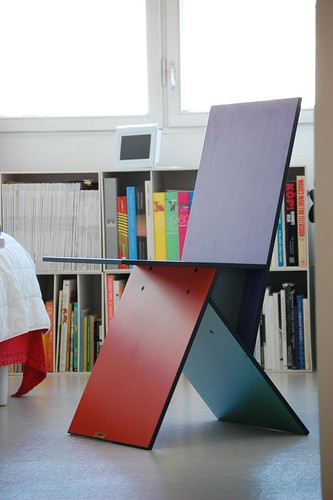I was a bit skeptical when Nannette Brown and her husband Jeff Lubin bought Mrs John L. Strong, the venerable Madison Avenue stationer in 2002. But if Mrs Lewis, who’d been seeking to retire, was willing to sell to them, what could one do but trust her?
And for sure, the expansion opportunities–the readymade papers, stationery, and related gift products–that the Lubin-Browns saw as the brand’s low-hanging fruit seemed plausible, even though the company didn’t consider itself something as crass as a brand. [We gave the little desk calendars as Christmas gifts, and they were always exceptional, right down to the packaging.]
Once one overcame the conceptual hurdle that Mrs Strong was a brand, a business, it seemed possible, maybe even not undesirable, that it could be grown and evolved into, say, an American Smythson. But it didn’t seem necessary, more like renovating an ancient house to triple mint.
As Mrs Brown told Forbes just last November, “Although the company turned a small profit at best, I thought it was a great opportunity to build a much bigger brand and to introduce it to a larger audience.” That audience, she figured, would order frequently if Mrs Strong’s products were more closely linked to the fashion world:
“For example, if Marc Jacobs is using a certain coloration, or Lanvin a certain beadwork, that might translate into company designs,” she says. “Two seasons ago, Zac Posen did a caramel-colored croc that I loved, and I used that for envelope linings.”
Well that didn’t turn out so well. One has a right to be surprised and more than a bit dismayed to learn that a couple of weeks ago, Mrs Brown abruptly pulled the plug on Mrs John L. Strong and announced the death of luxury:
Eighty-year-old luxury stationer Mrs. John L. Strong is closing due to the economic downturn, according to a press release CEO Nannette Brown sent out today. “This is a sad day for Mrs. John L. Strong and a sad day for luxury as the world has become increasingly bereft of unique, hand-finished products,” Brown says in the release. The brand’s Madison Avenue atelier and Barneys boutique will both close, as well as its finishing facility in the garment district and outpost in Beverly Hills. The company built a following of A-list clients over the years, from Oprah Winfrey and Bruce Springsteen to Tommy Hilfiger and Anna Wintour.
Let’s just acknowledge upfront that one problem might be targetting, the perception of who constitutes an A-list clientele. Wintour’s obviously a special case, but I can’t imagine a single, solitary customer of Mrs. John L. Strong who would be swayed or encouraged by an association with Oprah, Bruce, or Tommy. [When we were ordering baby announcements post-Brown buyout, one of the samples in Mrs. Lewis’s stack was for Francis Bean Cobain, and another for a Matt Lauer kid. I didn’t blink at the latter, but I’ve always wondered whether the Cobain thing was a plant, a prop.]
Which wasn’t even my point. My point was that Mrs Strong was a profitable, if small, business as it was. NY Mag didn’t include it, but Mrs Brown’s press release had two other quotes with which one must take issue. First, from Tom Kalenderian, EVP GMM, Men’s and Chelsea Passage Barneys New York: “Upon assuming the stewardship of Mrs. Strong, Nannette Brown restored the luster to the brand infusing her exquisite taste and infinite dedication…” Not to impugn Mrs. Brown’s fashion sense or dedication in any way, but the fact is, she was basking in a luster, not restoring it.
Then there was this other, somewhat oddly tensed quote from Mrs Brown herself:
“…investor’s failure to finance the business’ expansion plans combined with a challenging retail and economic environment, left the company with no alternative but to close its doors. Further efforts to capitalize or sell the business had failed.”
It is always awkward to talk about one’s own money. The investor in Mrs Strong was, of course, Mrs Brown and her husband, Mr. Lubin, who, it was just announced Monday, was leaving his post as managing partner of the European operations of Cerberus Capital Advisors, the private equity firm whose controlling equity stake in Chrysler was just wiped out by the company’s bankruptcy and acquisition by Fiat. [As an aside, soon after Lubin joined Cerberus, the company named former Bush treasury secretary John Snow as its Chairman. Mr. Lubin’s nominal former boss, the head of Cerberus’ International Advisory Board, is Dan Quayle. Another partner is indicted Bernard Madoff associate Ezra Merkin.]
Which is not my point, either, except that the “challenging economic environment” Mrs Strong faced can be particularized to some degree to the reversals facing Mrs Brown and Mr. Lubin. And to the customer segment who looked to Oprah for luxury and fashion inspiration.
Which is to say that there exists at least the possibility that Mrs John L. Strong might be able to find a new life, not as a global luxury brand, but as the small, largely invisible, extremely specialized business it once was. At the very least, Mrs Strong’s archives and inventory of dies and papers should be brought back into service, and not just as a side business of Kate’s Paperie or whatever.
I would expect that an old guard clientele of Mrs Strong would show sufficient goodwill toward a talented, slightly obsessive, self-effacing, stationery connoisseur–a Jonathan Hoefler of paper with a passion for understated service–to sustain a small, efficiently run business. Then let the brides have their thing, properly guided, and when the status quo ante is stabilized, the new steward can explore thoughtful, appropriate, organic product growth–or not.
Mrs John L Strong perfected a certain rareified tradition of personal paper as a direct embodiment of personal identity. Unfortunately, Mrs Brown’s fashion-focused strategy was dependent on people whose identity stood solely on their Zac Posen crocs. One hopes that Mrs Brown will take her stewardship seriously enough to pass Mrs Strong into appreciative, if humbler, hands. Because I’ve got two boxes of stationery left, and I will be needing to reorder in a year or so.








